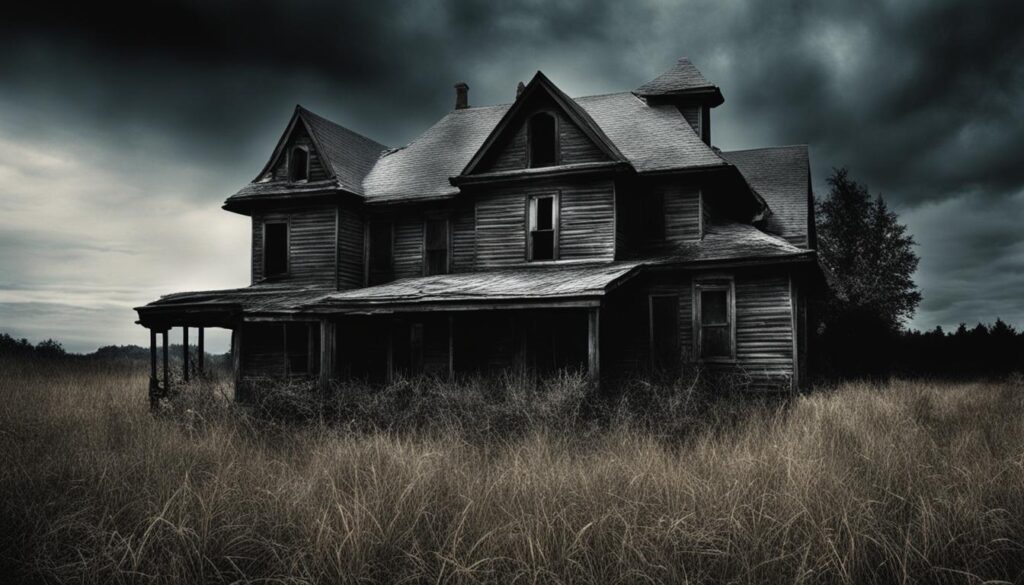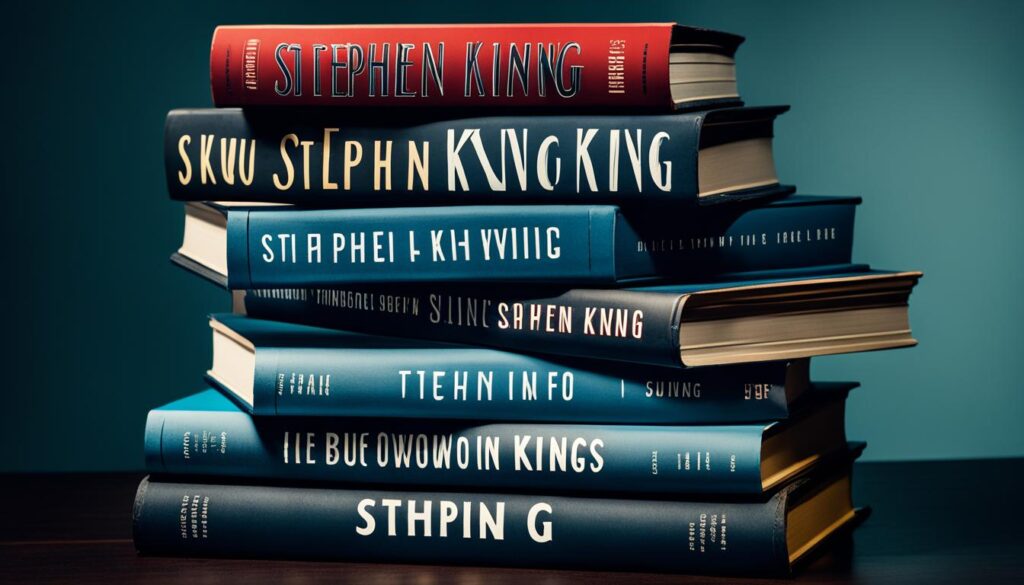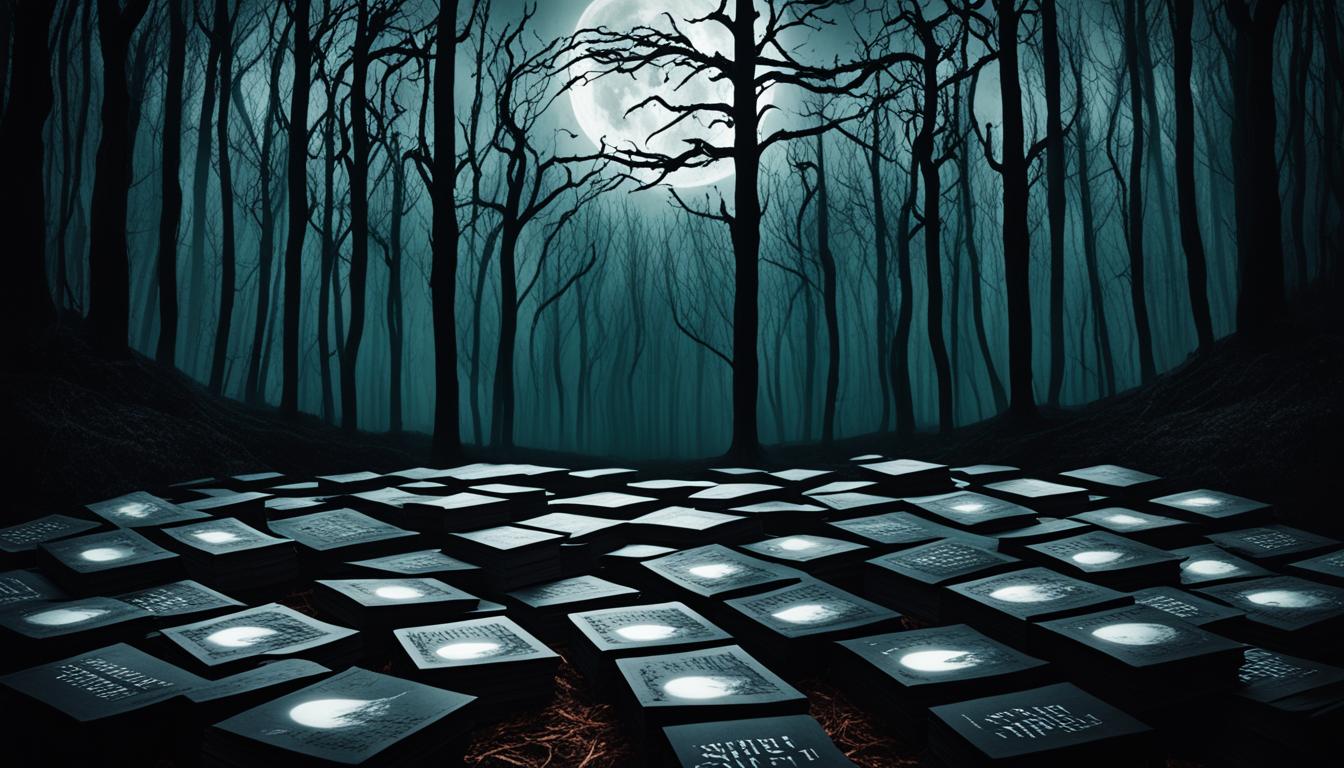Embarking on a journey through the macabre corridors of Stephen King‘s imagination reveals a trove of terror that has captivated fans of horror fiction. The author, whose name is synonymous with spine-chilling narratives, has not only penned full-length novels but also mastered the craft of short-form storytelling. Within this guide, readers will find themselves immersed in the deviously diverse realms spawned from King’s short story collections. Each tale is a testament to his uncanny ability to transform ordinary life into landscapes of fear and wonder, a skill that cements his status as a cornerstone of horror literature.
This insightful walkthrough serves both as an introduction to the uninitiated and a detailed map for seasoned explorers of King’s literary universe. Beyond mere summaries, it offers an overarching view of the hallmarks that define King’s short stories—each one a piece of a larger mosaic that contributes significantly to the horror genre. Join us as we unravel the intricate tapestry woven by one of the world’s most renowned authors and peer into the shadowy corners of each chilling narrative.
Exploring the Horrors: An Introduction to Stephen King’s Short Fiction
Stepping into the labyrinthine world of King’s horror short stories can be seen as an apprenticeship under a master of horror, with an introduction to Stephen King’s narrative universe providing a gateway to the dimensions of dread he meticulously crafts. His short fiction represents a microcosm of fear in bite-sized, yet potent, servings—demanding readers renounce the ordinary and brace for the nightmares ahead.
- Thrills and Chills: King’s horror stories encapsulate a range of terrors, from the supernatural to the psychosocial, each tale a foray into the unknown.
- Varied Themes: Exploring existential fears, King often contemplates the human condition, societal norms, and the consequences of technology gone awry.
- Immersion: Readers become detectives, piecing together the nuanced layers of terror that King is renowned for, all while grappling with his use of metaphor and symbolism.
Inductees into the eerie expanse of King’s imagination often begin their journey with seminal works that hallmark the breadth and scope of his artistry. An introduction to Stephen King’s bibliography of short fiction illuminates the pathways through which he has shaped the horror genre and influenced countless contemporaries and successors. Consider the following overview:
| Collection | Notable Traits | Impact on Horror Literature |
|---|---|---|
| Night Shift | Early work showing King’s propensity for merging the mundane with the horrific | Introduction of themes and settings that recur throughout his career |
| Skeleton Crew | Includes “The Mist,” a novella highlighting King’s skill in creating otherworldly dimensions | Pushes the boundaries of short fiction’s scope within the horror genre |
| Everything’s Eventual | Demonstrates King’s versatility in storytelling and mastery in crafting suspense | Offers a touchstone for discussing the psychological aspects of horror |
| The Bazaar of Bad Dreams | Diverse collection proving King’s continuous evolution and relevance | Invites contemporary analyses of King’s work and its influence on modern horror |
Through his illustrious career, Stephen King has emerged as a defining figure in horror literature. Whether for the uninitiated seeking an exhilarating leap into the macabre, or for the seasoned aficionado revisiting these dark corridors, each of King’s horror short stories serves to startle and stir, confirming his enduring legacy as a master craftsman of the genre.
Iconic Themes and Motifs in King’s Short Stories
Delving deeply into the distinctive literary world of Stephen King’s short stories reveals a tapestry woven with recurring themes and motifs. His mastery in conjuring tales where psychological horror intersects with stark realism allows readers to explore the depths of both human and supernatural terror. Through his incisive writing, King unravels the fabric of the ordinary, revealing the nightmares that lie beneath.

Psychological Horror and Realism
Stephen King harnesses the psychological landscape to draw fear from the corners of the mind. His characters are often everyday people who encounter the macabre, leading to a confrontation with their inner darkness and fears. This collision of the mind’s fragility against the eeriness of horror makes King’s narratives unnervingly relatable and chillingly realistic.
Supernatural Elements and Unseen Terrors
King’s foray into the supernatural is not just about the ghosts and ghouls; it’s an exploration into the unknown that borders our reality. His short stories frequently introduce elements that cannot be explained by science or reason, thus magnifying the terror of the inexplicable. Supernatural storytelling becomes a vehicle for King to examine human reactions to forces beyond their comprehension or control.
The Everyday Turned Nightmarish
Perhaps one of the most unsettling aspects of King’s literary themes is his ability to transform the mundane into something deeply sinister. A regular object, a common event, or a typical day can become the source of unparalleled dread. By infusing normality with a sense of the grotesque or foreboding, King elevates everyday horror to an art form, leaving readers to wonder if their reality could also fracture so dramatically.
The Rise of a Master Storyteller: Stephen King’s Early Works
At the dawn of his career, Stephen King’s early short stories were the harbingers of a new era in horror literature. These tales, often brimming with a macabre sense of curiosity and dark imagination, began to sketch the contours of what would become an iconic literary career. Laced within the fabric of King’s narrative mastery are the threads of an unmistakable voice, one that would come to define horror for generations.
Understanding the groundwork of King’s prolific output requires a deep dive into those early stories, which were often published in men’s magazines and other periodicals of the time. It was here that King honed his craft, chiseling out the psychological terror and human vulnerability that would become hallmarks of his later works. These stories were not merely fledgling attempts at storytelling but were potent with potential, resonating with readers and critics alike who saw the spark of a master storyteller in the making.
- Publication Outlets – Many of King’s initial short stories found homes in publications such as Cavalier and Adam, paving his way into the literary world.
- Diverse Genres – Despite his association with horror, King’s early works spanned a variety of genres, showcasing his versatility and depth as a writer.
- Recognition and Awards – These early stories garnered accolades, including the recognition of the Horror Writers Association, foreshadowing his enduring impact on the field of horror writing.
As the beginning of King’s career took shape, each story added another layer to his emerging profile as an author. From the psychological intrigue of ‘The Mangler’ to the chilling cosmic horror of ‘The Lawnmower Man,’ King’s early stories did more than entertain—they sowed the seeds of a rich narrative legacy that readers and critics would follow with eager anticipation. Indeed, these formative short stories by Stephen King were the prologue to what would become a voluminous and celebrated body of work, forever altering the landscape of modern horror.
Stephen King’s Story Collections: A Gateway to Diverse Worlds
Stephen King’s remarkable anthologies are more than just an assemblage of horror stories; they serve as portals into a meticulously crafted and interconnected King universe. Each collection stands as a testament to King’s prowess in the realm of short fiction, weaving a rich tapestry that ties together the everyday with the eerie. From riveting stand-alone tales to those that hint at a larger world, the collections spotlight his vast range of storytelling.
Breakdown of Each Collection
The collections showcase a variety of themes and styles. Spanning decades, they exhibit Stephen King’s evolution as a writer and his ability to explore the complexities of human emotion through the lens of horror. Below is a snapshot of these notable short story collections that contribute to the anthology.
| Collection Title | Publication Year | Notable Stories | Overarching Themes |
|---|---|---|---|
| Night Shift | 1978 | ‘Children of the Corn’, ‘The Lawnmower Man’ | Isolation, Madness |
| Skeleton Crew | 1985 | ‘The Mist’, ‘The Raft’ | Survival, Unseen Horror |
| Nightmares & Dreamscapes | 1993 | ‘Dolan’s Cadillac’, ‘The End of the Whole Mess’ | Retribution, Chaos |
| Just After Sunset | 2008 | ‘N.’, ‘The Things They Left Behind’ | Supernatural, Loss |
| The Bazaar of Bad Dreams | 2015 | ‘Ur’, ‘Mile 81’ | Mortality, Technological Fear |
Interconnected Narratives and Easter Eggs
For fans of King’s expansive work, one of the delights is discovering the subtle connections and easter eggs peppered throughout his stories, underscoring the shared universe many of them inhabit. These interwoven tales reveal layers of depth, inviting avid readers to scour texts for hints of larger narratives at play. This interconnectedness not only enriches each reading experience but also establishes a common thread that unites the Stephen King anthology as a singular entity in the literary world.
Unearthing Hidden Gems: Lesser-Known Short Stories by Stephen King
While many of Stephen King’s short stories have become household names, a trove of lesser-known Stephen King stories remains shrouded in the depths of his extensive catalog. These rare King short fictions often escape the limelight but shine with the same unsettling glow that have made King’s mainstays famous. Below, we delve into some of these hidden treasures, offering aficionados and new readers alike a chance to explore the eerie corners of King’s imagination.
King’s rare tales often experiment with themes and structures that deviate from his usual narrative paths. With an uncanny ability to transform the mundane into the macabre, these works are a testament to his versatility as a master storyteller. From psychological deep-dives to chilling supernatural encounters, each tale is a unique piece of the puzzle that is King’s dark, fictional universe.
- Pulsating with psychological complexity, stories like “The Fifth Quarter” weave a web of suspense seldom seen in his major works.
- King’s shorter works like “The Doctor’s Case,” a rare foray into the world of Sherlock Holmes, present a stunning homage while showcasing King’s flair for mystery.
- “The Ten O’Clock People,” while less universally known, packs a classic King punch, blending social commentary with elements of horror in a distinctly unsettling narrative.
- In “Everything’s Eventual,” readers encounter a unique take on destiny and the sinister forces that can manipulate it, reminding us that the extraordinary can exist in the most ordinary of places.
These narratives, whether found in comprehensive anthologies or scattered in obscure publications, invite a deeper appreciation for King’s craft. Discovering these rarities not only provides additional hours of spine-tingling entertainment but also contributes to a fuller understanding of King’s development as a storyteller, whose ability to tap into our deepest fears remains unmatched.
The Collection of Stephen King Short Stories: A Comprehensive List

Delve into the vast expanse of Stephen King’s imagination with this comprehensive anthology list of his short stories. Renowned for their profound impact on the horror genre, King’s narratives have not only unsettled readers but have left a lasting imprint on literary criticism. Below, find the meticulously compiled collections and individual stories that showcase the breadth of King’s short-form storytelling mastery.
Anthologies Featuring King’s Short Stories
Stephen King’s short stories have been published in a variety of anthologies, reflecting his versatility and consistent contribution to horror literature. The following is a selection of notable collections where his short fiction has been prominently featured:
- ‘Night Shift’ – King’s first collection of short stories, introducing readers to his signature blend of the macabre with the mundane.
- ‘Skeleton Crew’ – A compilation that further cements King’s prowess in the short story format with chilling narratives.
- ‘Nightmares & Dreamscapes’ – An assortment that brings together tales of horror, fantasy, and psychological thrills.
- ‘Everything’s Eventual’ – A showcase of stories where King experiments with different voices and perspectives.
- ‘Just After Sunset’ – Reflecting King’s maturation as a writer, this collection demonstrates nuanced horror and character depth.
- ‘The Bazaar of Bad Dreams’ – A recent anthology that presents a mixture of classic King themes and new explorations in genre.
Stand-Alone Short Stories and Their Impact
Stephen King has also crafted numerous stand-alone short stories that have been published in various magazines and literary journals. These stories often probe in-depth human fears and question the fabric of reality. Recognized for their narrative impact, several have also inspired major motion picture adaptations:
| Short Story | Publication | Notable Impact/Adaptation |
|---|---|---|
| “Rita Hayworth and Shawshank Redemption” | Different Seasons | Adapted into the acclaimed film ‘The Shawshank Redemption’ |
| “The Body” | Different Seasons | Basis for the film ‘Stand By Me’ |
| “Children of the Corn” | Night Shift | Spawned a franchise of horror films and a cult following |
| “Dolan’s Cadillac” | Nightmares & Dreamscapes | Adapted into a feature film exploring themes of revenge |
| “1408” | Everything’s Eventual | Turned into a psychological horror film |
Adaptations and Inspirations: Short Stories to Screen
Stephen King’s mastery in weaving horror and suspense has not only captivated readers but has also gripped audiences in front of screens worldwide. The adaptation of King’s chilling shorts into visual narratives has demonstrated the malleable and enduring nature of his tales. Here, we explore the transmutation of King’s literary craft into cinematic and televised experiences, examining how these story adaptations maintain the essence of King’s distinct storytelling on screen.
Cinematic Takes on Classic King Tales
Major motion pictures have often turned to Stephen King’s short stories for material, transforming them into feature films that resonate with King’s original vision, while also carrying their unique directorial flair. From ‘Stand By Me,’ derived from the novella ‘The Body,’ to ‘The Shawshank Redemption’—which sprang from ‘Rita Hayworth and Shawshank Redemption’—filmmakers have successfully translated King’s tales into box office hits that achieve both critical and popular acclaim.
Television and Web Adaptations
The small screen has also embraced King’s narratives, clarifying that horror can thrive not only in theaters but also in the intimacy of one’s living room. With series and even web episodes, these adaptations often delve deeper into character backstories and plot intricacies, providing an expansive canvas for the dark and supernatural elements that form the backbone of King’s horror. Television projects like ‘Castle Rock’ weave an anthology that pays homage to various King tales, creating a tapestry of horror that underscores King’s expansive influence on visual storytelling.
Exclusive Insights: Interviews and Forewords by the Author
In this closing section of our in-depth exploration into the world of horror fiction’s reigning monarch, we let readers behind the velvet curtain into the private thoughts of the author himself. Culled from a variety of sources, the treasury of Stephen King interviews and the insightful forewords penned for his short story collections serve as a masterclass on the nuances of his crafts. They reveal not just the mechanics, but also the beating heart behind his most chilling and beloved works.
Imparting author’s insights on storytelling, King openly discusses his literary forays into the macabre and the mundane, which converge to form his signature brand of horror. The forewords offer a retrospective viewpoint, touching upon the inspirations for his globally celebrated short stories. In his conversations with interviewers, King dissects his methodology, grants advice to aspiring writers, and occasionally, divulges the intriguing genesis of his story ideas—rendering these pieces a rich vein for scholars and fans alike.
From the author’s reflections, we gain a profound understanding of how his life’s anecdotes often blend with his boundless imagination, resulting in narratives that terrify, surprise, and mesmerize. Stephen King’s interviews not only enrich the reading experience but also lay bare the timeless adage that understanding the teller can deepen the impact of the tale. As we conclude our guide, these gems of wisdom from King emerge as the cornerstone of his enduring legacy within the pantheon of horror fiction literature.



